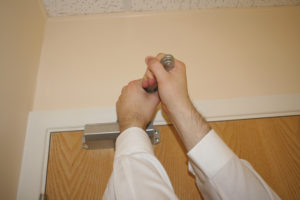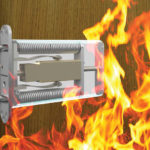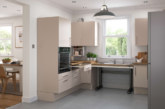The fire safety spotlight is on the social housing sector, particularly with regard to high-rise flats, and councils and housing associations are revaluating the fire safety measures in the properties they own and manage. Samuel Heath offers advice on the specification and installation of door closers.
Many local authorities have undertaken fire safety assessments of existing buildings and are extensive improvements. Whilst financial resources will have a bearing on these refurbishments, there appears to be a much greater move towards choosing products on the basis of their performance, quality and reliability of products, rather than cost.
Providing safe, secure and comfortable accommodation in the social housing sector imposes enormous responsibilities on social landlords and those delegated to design, build and maintain the housing stock. There is a wide variety of requirements that need to be taken into consideration in ensuring that homes are safe and fit for habitation, including Building Regulations, product performance standards, codes of practice and legislative instruments.

In addition, these various influences and controls have to be applied with due regard to the needs of those living in the dwelling; tenants with physical or psychological challenges, for example, may need special consideration when it comes to the facilities provided and products used.
Similarly, the risk of products being damaged, whether through a deliberate act, lack of care, misuse or tampering may also need to be taken into account. Damaged products not only incur additional maintenance costs; they can also have a detrimental effect on the building’s ability to provide decent, safe accommodation.
There is also a growing appreciation amongst designers and managers that dwellings in the social housing sector should provide similar levels of comfort and aesthetics as those in the private sector. So, how can a door closer be expected to contribute towards all of these requirements; fire performance, accessibility, safety, reliability, damage limitation, comfort, aesthetics and so on?

Fire and accessibility
Where performance is concerned, the key considerations when selecting door closers are fire safety and accessibility. Local authorities will be well aware of the legislation and performance standards governing these, including CE marking, Building Regulations, the Regulatory Reform Order and the Equality Act.
Door closers obviously need to satisfy these requirements, but the product’s ability to perform reliably time after time, and for many years, is critical. The opening forces stipulated by accessibility requirements are a good example of this need to assure consistent performance in a door closer.
Cycle testing of a selected sample under laboratory test conditions will provide some indication of this, but those responsible for door closer selection should be confident that the product used will achieve this performance reliably and consistently. The design, engineering and quality of the door closer should also be paramount in the selection process, as should the reputation of the manufacturer.
Additional benefits
Consideration also needs to be given to the needs of tenants and the situation in which the door closers are being used. Here, again, the performance, functionality and features of some door closers can deliver additional benefits that make them more suitable for many social housing applications.
Jamb-mounted, concealed door closers, such as Powermatic, are becoming increasingly popular in high-rise accommodation. Available in standard and free swing models, they deliver a variety of benefits that ensue from the fact that the door closers are totally concealed when the door is closed. Where surface mounted door closers have mechanical arms and control boxes on show, the jamb-mounted door closer is completely invisible when the door is closed, and very unobtrusive when the door is open.
Improved aesthetics
Powermatic concealed door closers have been specified by designers and architects for many years to assure the aesthetics of interiors in a wide variety of buildings, notably hotels and high-end apartments. The principle of improved aesthetics is now becoming more widely valued in social housing developments, and not for the sole purpose of a improving the look of interiors.
The lack of unsightly mechanical devices creates a more homely, less institutionalised atmosphere, which contributes towards the comfort and well being of residents.
A more practical and financially astute reason for selecting concealed door closers is the fact that they are less likely to be damaged, whether by a deliberate act, lack of care, misuse or tampering. This can mean reduced maintenance costs, less inconvenience for residents and more reliable fire safety. Totally concealed door closers also offer some benefits in dwellings occupied by tenants with psychological or mental health challenges.

Choose wisely
When selecting door closers, specifiers and door manufacturers should be particularly careful to choose products which will stand up to the rigours of day-to-day use in social housing situations and which will perform reliably. Powermatic door closers incorporate a number of specific features which provide this assurance, including a twin-power mechanism and two strong rigid stainless steel connecting arms. They also come with a 10-year warranty and there is the comfort of knowing that they are manufactured in the UK by Samuel Heath, a company with more than 50 years’ experience producing of concealed door closers.









